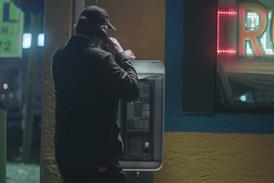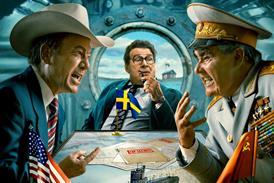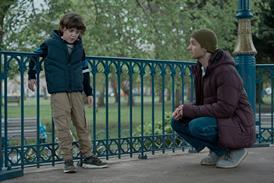Every move was covered by news cameras and beamed around the world. This unprecedented coverage gave the impression we were seeing everything that was going on, but in reality we saw very little. What were the Davidians doing inside the compound beyond the news cameras' gaze? And what was the FBI planning in its mission control centre a few miles away? Inside Waco, a two-hour documentary for Channel 4 and Discovery, set out to try to tell the real story of this bloody event - using documentary evidence, first-hand accounts, archive footage and drama reconstructions.
Mixing archive with reconstruction is always difficult and contentious. On the one hand, you are trying to immerse the viewer in a compelling and seamless story, while on the other you have a responsibility to signpost to the audience what is real and what is not, to preserve an accurate archival record.
Neil Rawles was hired to direct the film as we knew his gritty vérité drama style would result in very realistic reconstructions. From the outset, Rawles rightly insisted that there would be no CGI. All the effects were for real with no scene extensions or computer enhancements. Another rule we set ourselves was that we would never use reconstruction if actual archive of an event during the siege existed. Too many recent drama-documentaries have resorted to this, when fantastic archive film of what they are dramatising already exists. However good the reconstruction, nothing can be more accurate or more compelling than actual footage shot at the time.
It was clear from the beginning that using locations in the US would be problematic and expensive. Our first choice was to explore the possibility of
filming in Poland. Last year we had produced three ambitious drama-docs there and were able to achieve high production values at a significantly lower cost than in the UK.
However, we eventually tracked down an old US Air Force base in Suffolk that was perfect, with buildings that could be easily adapted to look like Waco. Set designer Jo Manser worked wonders to create sets that would cut well with the archive. Avoiding having to build complete sets from scratch offset the higher costs of filming in the UK with the advantage that Rawles was able to use his usual crew. Because they were familiar with the way he worked, it meant they could shoot scenes very quickly.
The drama reconstruction was filmed in just 11 days in early May, a gruelling schedule considering the script was over 90 pages long, involved a whole range of special effects and had the added complication of working with young children.
To give a definitive picture of the actual events, it was key that we had powerful, first-hand accounts from all sides. But finding people who would speak -especially British contributors - was a huge challenge. They were very nervous about talking to the media for fear of being demonised as cult members. Getting their agreement was a long and painstaking process that involved slowly building up their trust over many months. It was the same story with the Bureau of Alcohol, Tobacco and Firearms and FBI officers - many of whom were deeply affected by the events of 1993 because of the bitter acrimony that still surrounds the way the siege ended. The guarantee we gave all the contributors was that we wanted to give a fair and balanced account told in their own words.
One person we could not speak to was David Koresh, the leader of the Davidians who died in the fire that engulfed the compound at the end of the siege. However, the FBI had bugged the buildings and we had access to the transcripts of these recordings. This often enabled us to create exact dialogue used by Koresh during the siege. We also had access to an incredible video tape made by Koresh as the siege unfolded in which he introduces his extended family. Controversy has surrounded the circumstances inside the Davidians' home. Who fired the first shots? Who started the fires that consumed the compound at the end of the siege?
We needed to make sure we did justice to both sides and told a balanced story. Everything we included had to have strong
evidence to back it up. A golden rule we set ourselves was 'if we don't know, we won't speculate'. Both sides blame the other and it was imperative that we did not offer a judgement - merely delivered the facts.
Hopefully, the final film gives an accurate, intimate and com-pelling portrait of the tragedy - told through the stories of those who were actually there. It's a -360-degree account of what really happened.
Inside Waco is a Darlow Smithson production and airs on C4 on Thursday 1 February at 9pm


























No comments yet